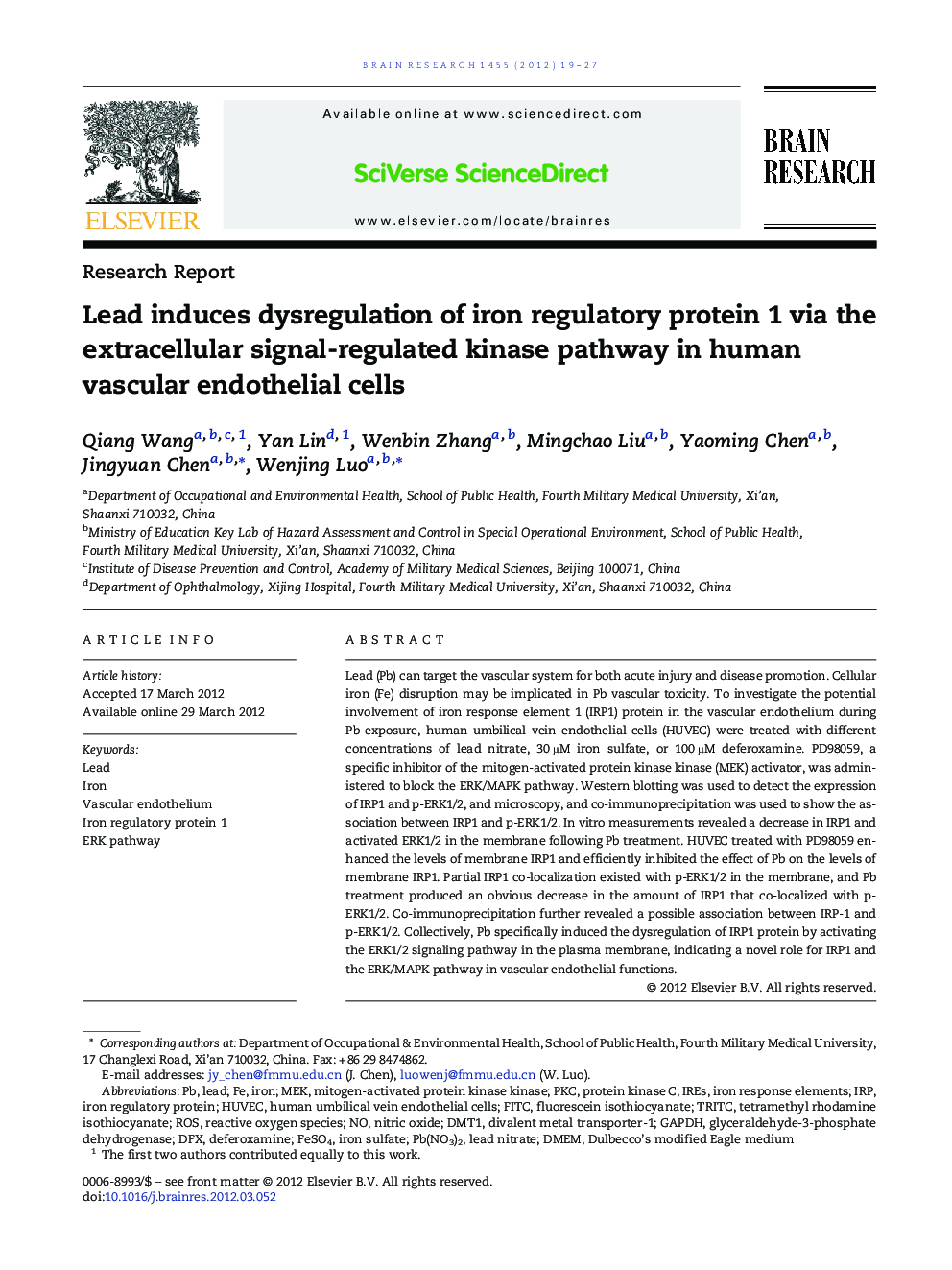| Article ID | Journal | Published Year | Pages | File Type |
|---|---|---|---|---|
| 4325240 | Brain Research | 2012 | 9 Pages |
Lead (Pb) can target the vascular system for both acute injury and disease promotion. Cellular iron (Fe) disruption may be implicated in Pb vascular toxicity. To investigate the potential involvement of iron response element 1 (IRP1) protein in the vascular endothelium during Pb exposure, human umbilical vein endothelial cells (HUVEC) were treated with different concentrations of lead nitrate, 30 μM iron sulfate, or 100 μM deferoxamine. PD98059, a specific inhibitor of the mitogen-activated protein kinase kinase (MEK) activator, was administered to block the ERK/MAPK pathway. Western blotting was used to detect the expression of IRP1 and p-ERK1/2, and microscopy, and co-immunoprecipitation was used to show the association between IRP1 and p-ERK1/2. In vitro measurements revealed a decrease in IRP1 and activated ERK1/2 in the membrane following Pb treatment. HUVEC treated with PD98059 enhanced the levels of membrane IRP1 and efficiently inhibited the effect of Pb on the levels of membrane IRP1. Partial IRP1 co-localization existed with p-ERK1/2 in the membrane, and Pb treatment produced an obvious decrease in the amount of IRP1 that co-localized with p-ERK1/2. Co-immunoprecipitation further revealed a possible association between IRP-1 and p-ERK1/2. Collectively, Pb specifically induced the dysregulation of IRP1 protein by activating the ERK1/2 signaling pathway in the plasma membrane, indicating a novel role for IRP1 and the ERK/MAPK pathway in vascular endothelial functions.
► Pb treatment decreased IRP1 expression and activated ERK1/2. ► PD98059 enhanced the levels of cytosolic IRP1 and inhibited the effect of Pb on cytosolic IRP1. ► Pb treatment produced a decrease of IRP1 that co-localized with p-ERK1/2 in the cytosol. ► Pb specifically induces dysregulation of IRP1 protein by activating ERK1/2 signaling pathway.
